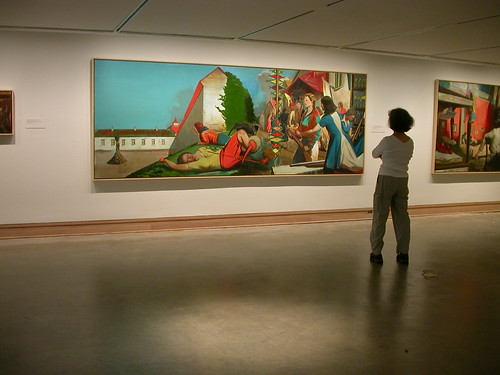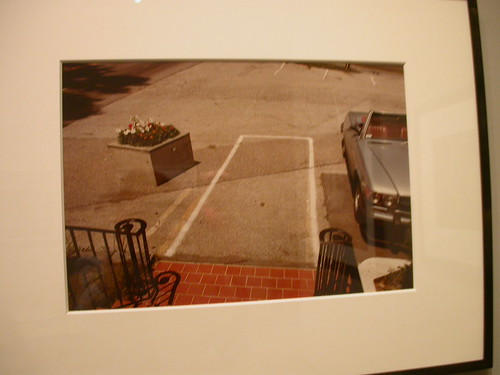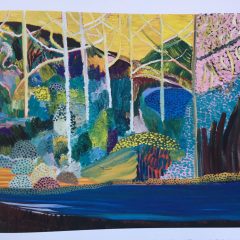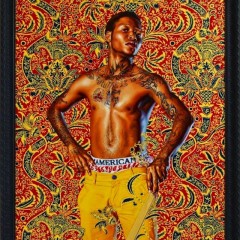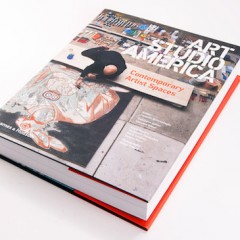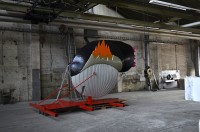The Met owns a couple Neo Rauch paintings which are on display in their Contemporary galleries. Next to the Contemporary galleries, the museum uses a small, low-ceilinged mezzanine space for artist’s projects, and it invited the East German Rauch to produce some new paintings for the space. Fourteen works are on view. (Kara Walker had her Apres Le Deluge project in the Mezzanine and before that, Tony Oursler exhibited works in the space.)
It’s an intimate space and was apparently a challenge for Rauch who likes to work exceedingly big. But he knuckled under and made some very long works that are short in stature…and some actually tiny works that must be no more than 24×18,” an astonishing size for this painter. The small works feel a little bit like studies or sketches but regardless of size, they all have the same monumentality and grandiosity and weirdness that is the trademark of this artist.
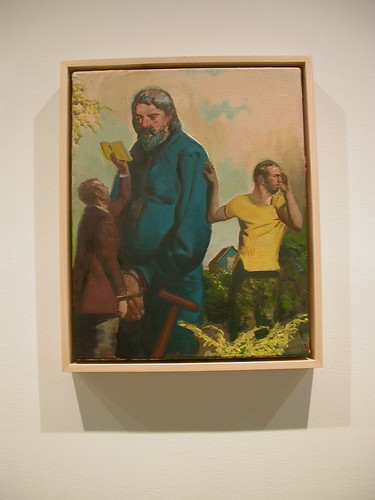
I want to say the vertically-challenged works are not as satisfying as other works by Rauch I’ve seen in Chelsea where the large canvases more than held their own in cavernous spaces that usually dwarf and subdue the art.
Here, constrained by the low ceilings, the works are a little subdues and don’t feel quite as odd and threateningly nightmarish. The figures even seem constrained — they are not full figures for the most part and they are supine or bent over like the ceiling is bearing down on them.
I’m guessing the horizontal format constrained the artist compositionally. For whereas his works usually suggest a kind of vertically stacked reality with multiple scenes taking place as if simultaneously, these works — equally theatrical as his other paintings — don’t let the action rip and roar as usual. There are no bodies falling and no particularly scary Bigfoot monsters lurking.
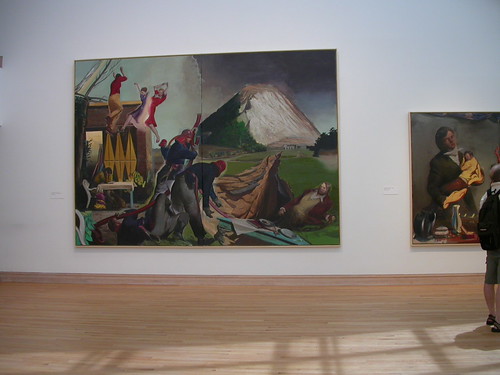
Neo Rauch, more typical of the scale he works in, in the Contemporary Gallery next to the Mezzanine.
That said, the lengthy horizontal canvases have a cinematic quality that unfolds as you strolled past and digest them.

Cate looking at a Neo Rauch work in the Met Mezzanine.
As figure painters go, and in fact as painters go in general, Rauch gives you much for your time spent looking. And even though the works are germinated in East Germany there’s a universality to them that allows any viewer to collude with the actors in making up a story.
The exhibit’s on view through Oct. 14.
Hidden in Plain Sight
Photographs from the collection
Jerry Shore, a native Philadelphian, (died 1994) is the surprise of this show of 35 photographic works at the Met. The show provides one after another quotidian image by many well known photographers — Walker Evans, Stephen Shore, William Eggleston, Jean-Marc Bustamante, Patrick Faigenbaum, Gabriel Orozco, Damián Ortega, Daniel Faust, Mitch Epstein, Lewis Koch, Bertien van Manen, Carrie Mae Weems, Rachel Harrison, and Shomei Tomatsu.
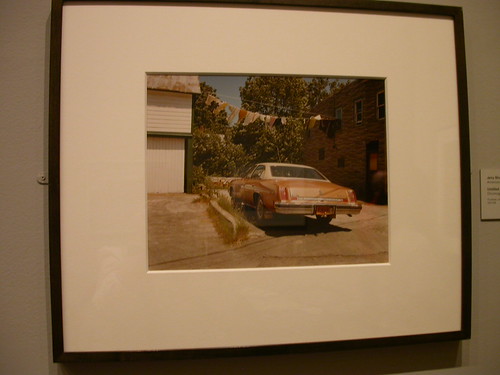
Jerry Shore. His photos are so forlorn and empty they have a bone weariness to them.
Shore (not related to Stephen) apparently moved to New York in the 1960s and worked for a documentary filmmaker on a short film about photographer Eugene Atget. He worked in the advertising realm as well making commercials for Pepsi and others. By the 1980s the advertising world had changed and he had trouble finding work. He fell in to a depression and drank and “spent the last decade of his life roaming the streets of New York with his camera recording the mundane scenery of urban life…” according to the wall card. He never exhibited his photos during his lifetime and when he died in 1994 at age 59 he left behind some 4,000 prints.
Shore’s works are quiet and poetic. Their focus is a relentlessly downbeat view of the world, a world cropped to an almost dogs-eye view, low-down and low down, that is idiosyncratic, and yet universal in its breezy snapshot affect. Very edgy and provocative work.
Gabriel Orozco is the featured artist in the show. The artist’s photographic works epitomise the show’s theme — everyday objects with big meaning. The photo I loved most by Orozco is the one he took in a graveyard in Timbuktu. If you didn’t know, you’d never guess it was a graveyard — it appears to be a desert hillside with some odd adornment of round pots seemingly tossed here and there. The pots are grave markers and the entire image is quiet and poetic.
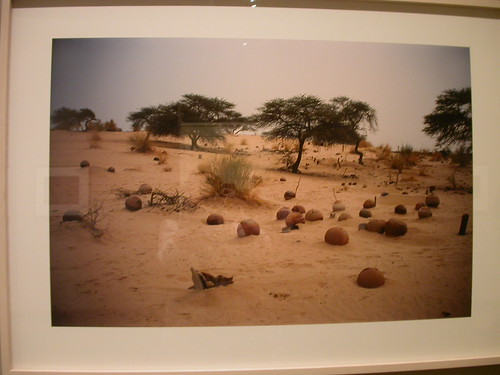
Gabriel Orozco, graveyard in Timbuktu
The title of this show (Hidden in Plain Sight) seems funny to me only because the gallery itself is tucked away–hidden –in the labyrinth of corridors dealing with European art of the 18th century. I would have walked right by the small recessed photo space which you enter through a dark narrow hallway but that Cate, a photographer, who’d been there before, knew its whereabouts. If you’re hunting for the gallery, here’s the clue: Right opposite the entrance to the photo gallery, Arnold Bocklin‘s Island of the Dead sits like the x on a treasure map. Find this painting and you’ve found the photo gallery. The show is up through September 13.
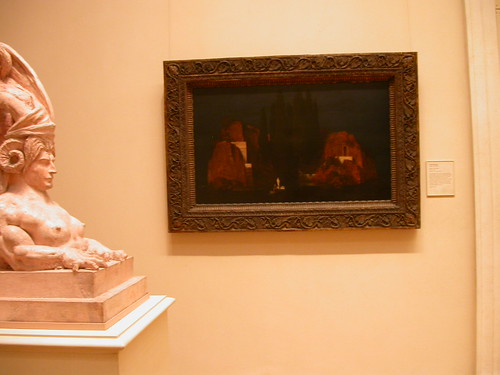
Arnold Bocklin, Island of the Dead. Marks the spot opposite the entrance to the photo gallery.
Finally, if you’re looking to have lunch al fresco in the city, I highly recommend this: On 42nd Street opposite Bryant Park there are a number of sandwich places (Panera etc). Get something to go and sit in the park. This is extremely popular with the office workers who pour into those eateries and then pour into the park at noon. We got the last available table and a couple chairs. But lunch was excellent under the canopy of tall trees and surrounded by people enjoying their leisure for a few moments before rushing back to wherever they came from. More pictures at flickr.



